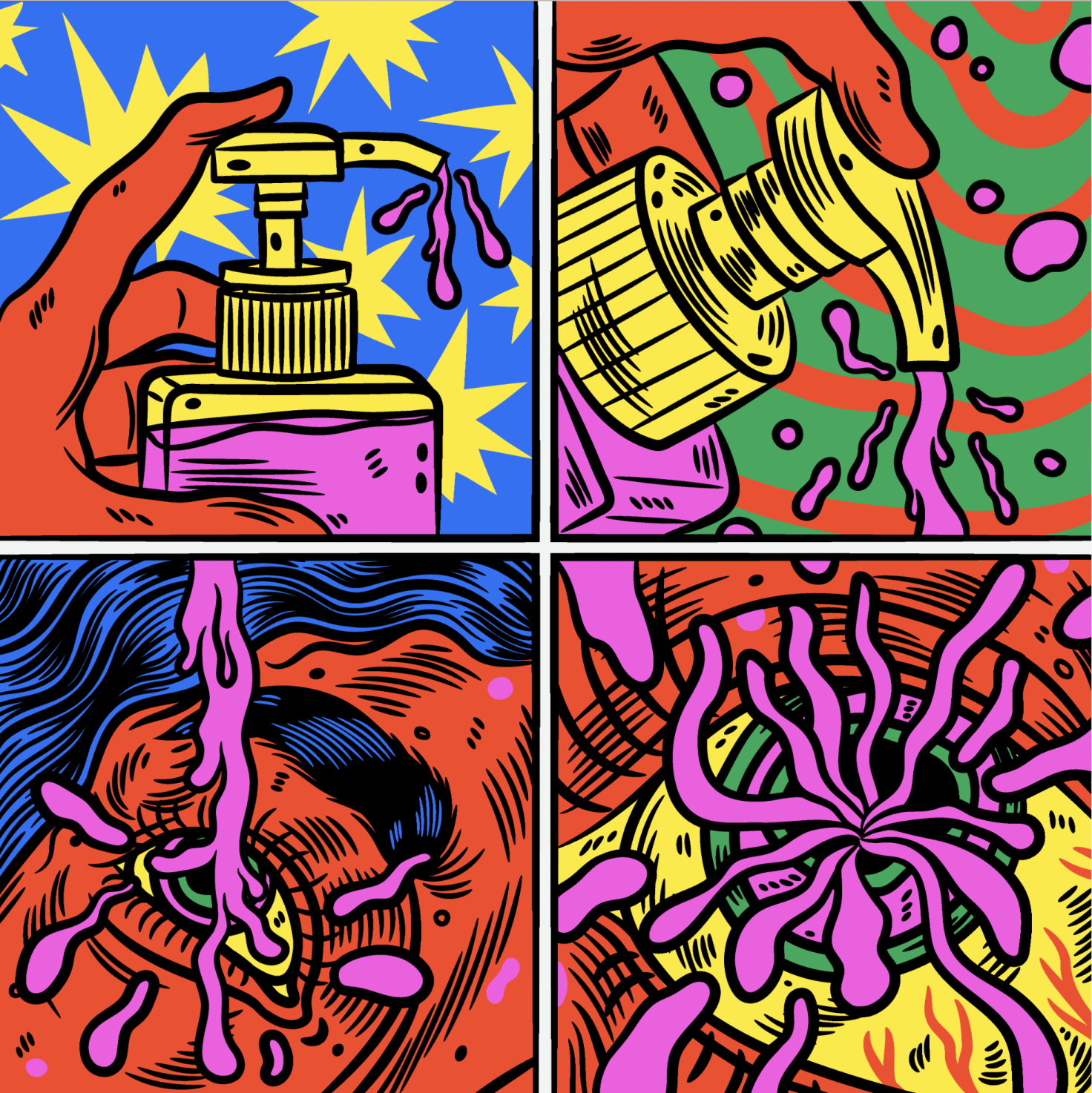Inspired by sci-fi, pop culture, Afrofuturism, and her Tamil Dalit heritage, Siva creates surreal illustrations that envision an inclusive and progressive society—a utopian future universe in which “gooey, mutated alien things in outer space, underwater, and the unknown bask in their unique feminine energy,” as she puts it.
The rich hues of reds, blues, and greens; thick, black brush-pen strokes; and otherworldly, futuristic mutants first made an appearance in the sketchbook pages she posted online in 2015 and 2016. Something was definitely brewing. But it was only after quitting her job as a graphic designer in New Delhi that she could fully embrace illustration as a practice, leaning on online art communities such as DeviantArt, Tumblr, and early Instagram to get her work out. “I always doodled at the back of my exam sheets and notebooks in school but never thought you could make a career out of it,” she told me when I visited her blue house in Goa, where she is currently based. I was imagining someone wholly different when a smiling Siva invited me in, offered me a glass-filter coffee, and showed me the wall inside her home that she was painting that afternoon.
In March 2020, just weeks before India went into lockdown, Siva moved to Goa. Not knowing anybody around, she turned inwards and started deepening her illustration practice, channeling her yearnings of escapism and restlessness into art that exists at the intersection of femininity, sexuality, gender, speculative fiction, and the representation of marginalized communities.
One of the most instant connections that can be seen as an Indian viewer of her work is Siva’s inspiration from her hometown of Vellore, Tamil Nadu, particularly in the choice of pastels and strong reds and blues predominant in her work. While she has spent time abroad, much of her work is inspired by the temples, the act of shringar, or adornment, of women warriors and goddesses, her grandmother’s jewels, and mythological reinterpretations of her Tamilian culture and heritage.








